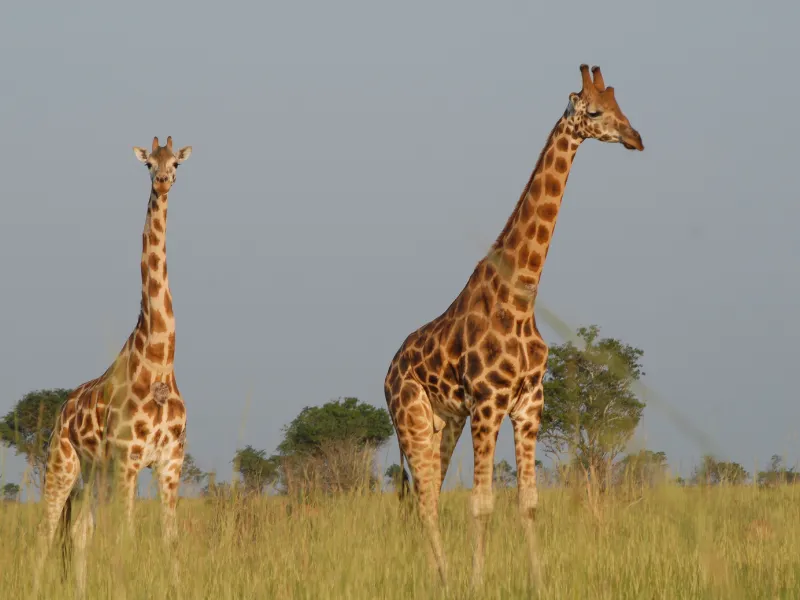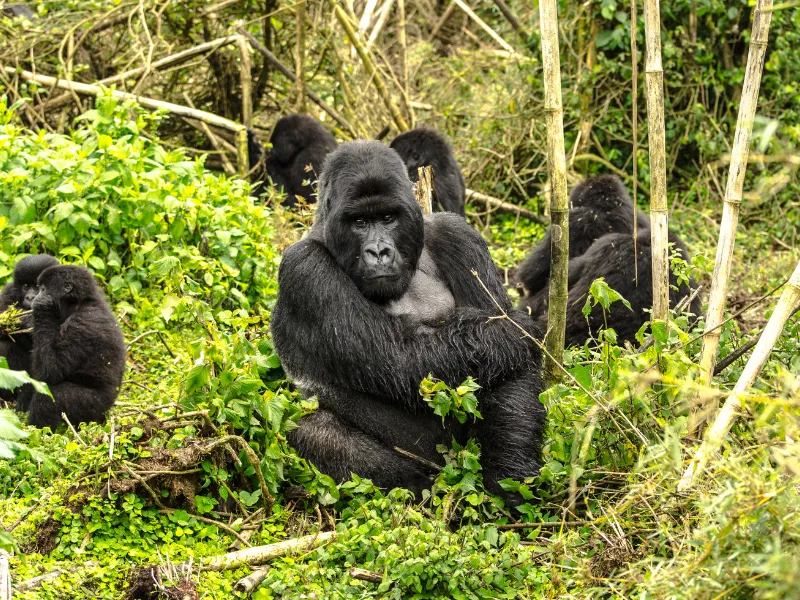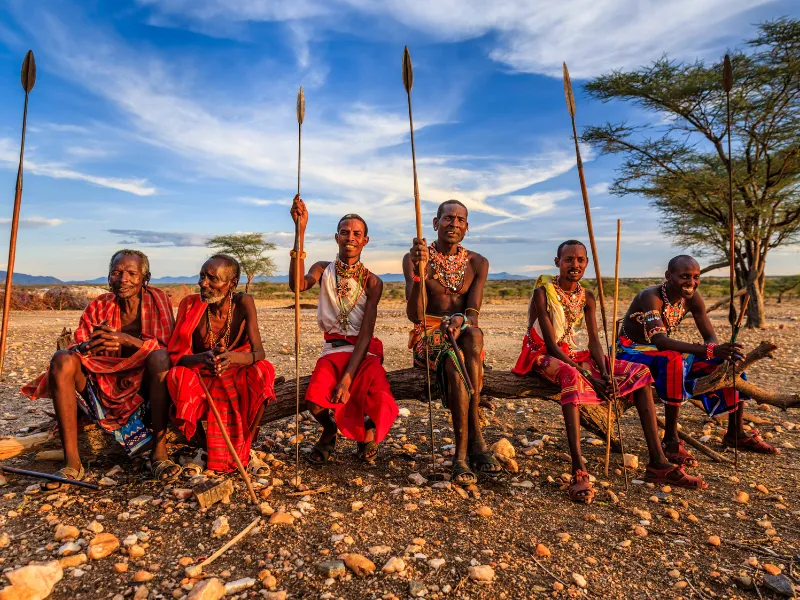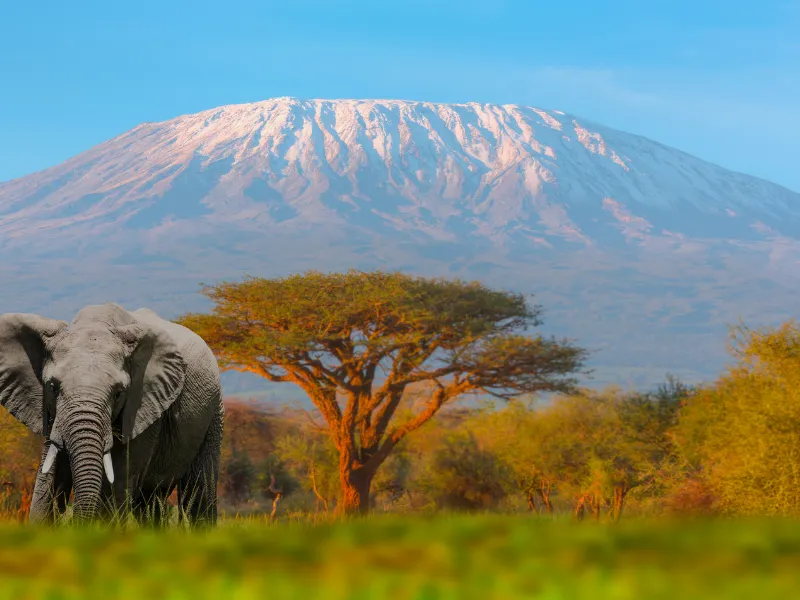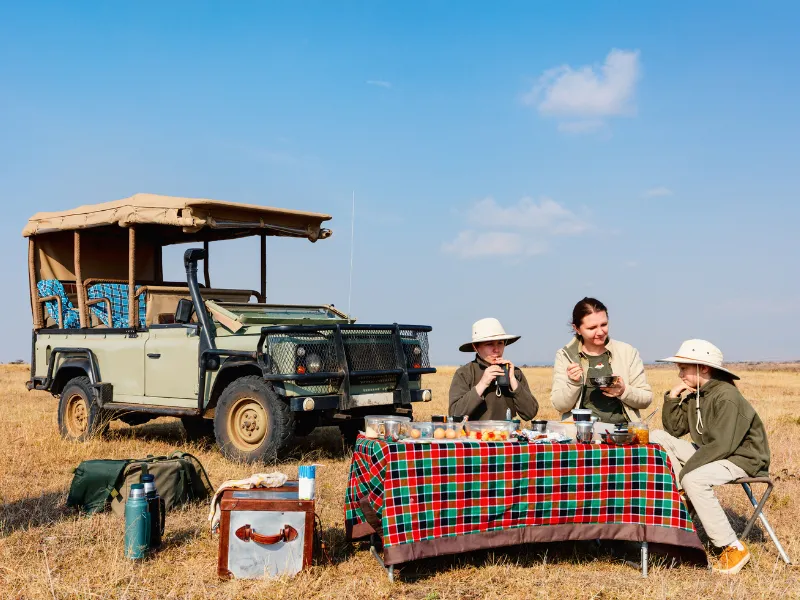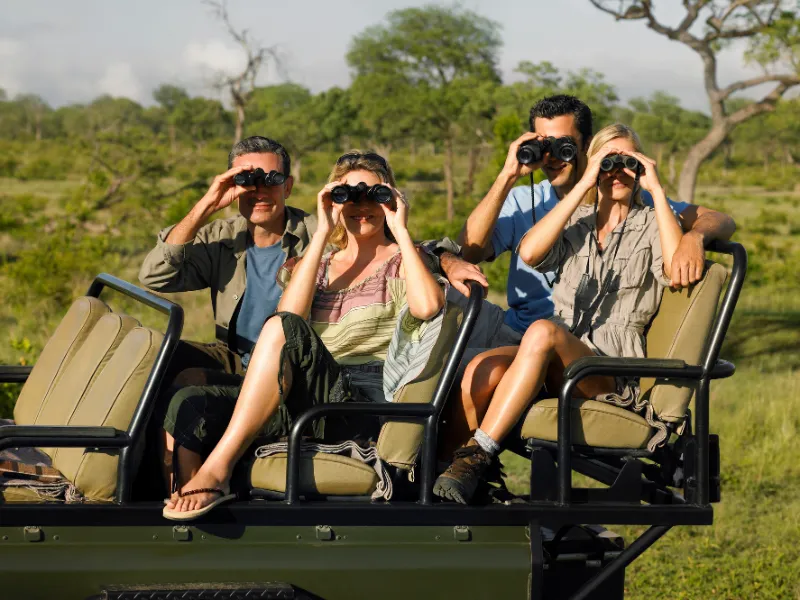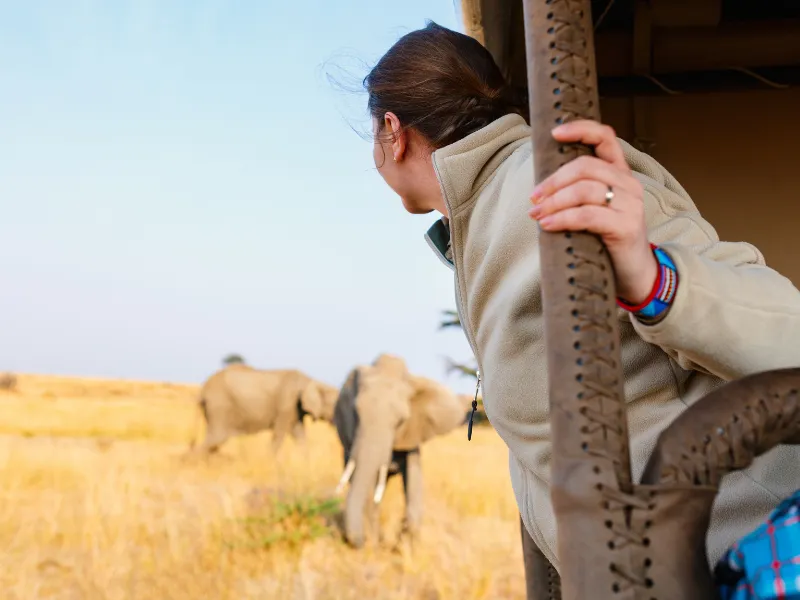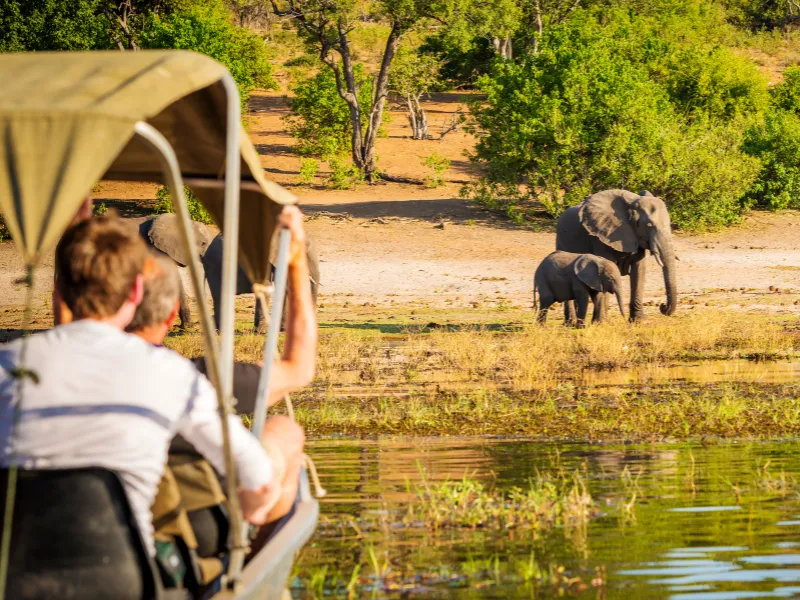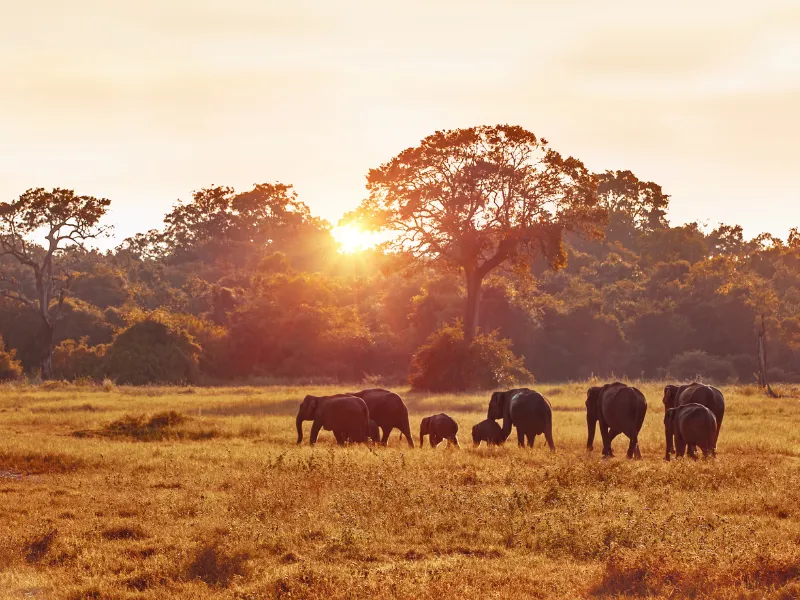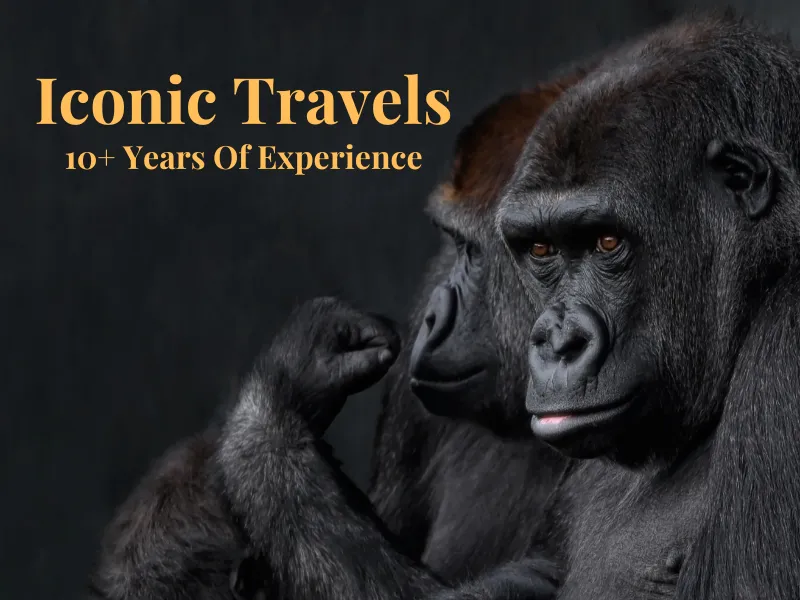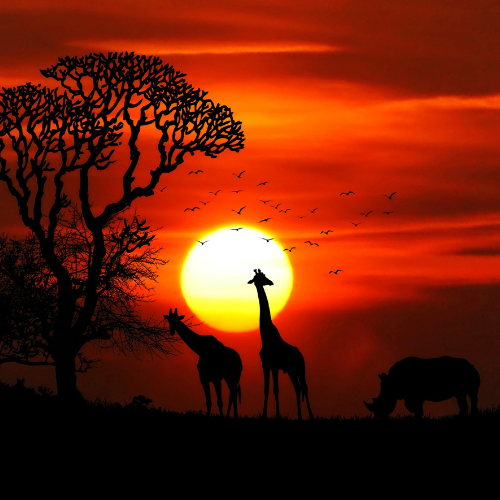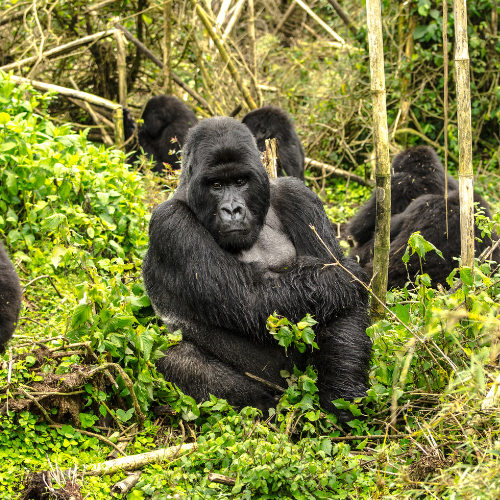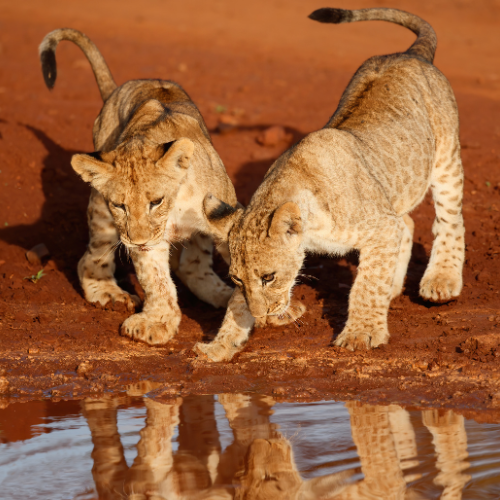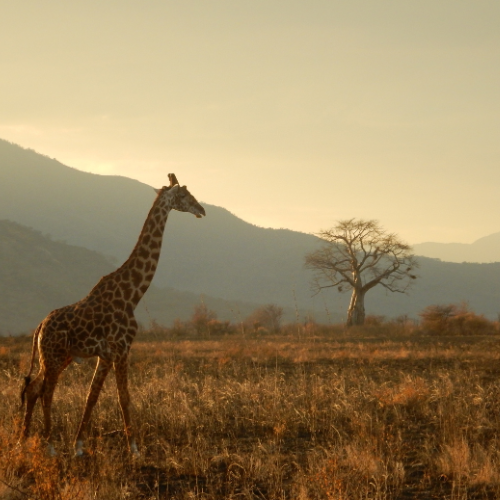Land of a thousand hills
Rwanda
Capital
Kigali
Currency
RWF (Rwandan Franc)
Language
French, English, Kinyarwanda
Time Difference
UCT+02:00
Africa's Best Gorilla Treks
Rwanda is a place of quiet strength and natural elegance. Famous for its rare mountain gorillas and rolling green hills, Rwanda offers a deeply emotional and serene safari experience. At Iconic Travels, we show you Rwanda beyond the surface—where resilience, beauty, and culture meet.
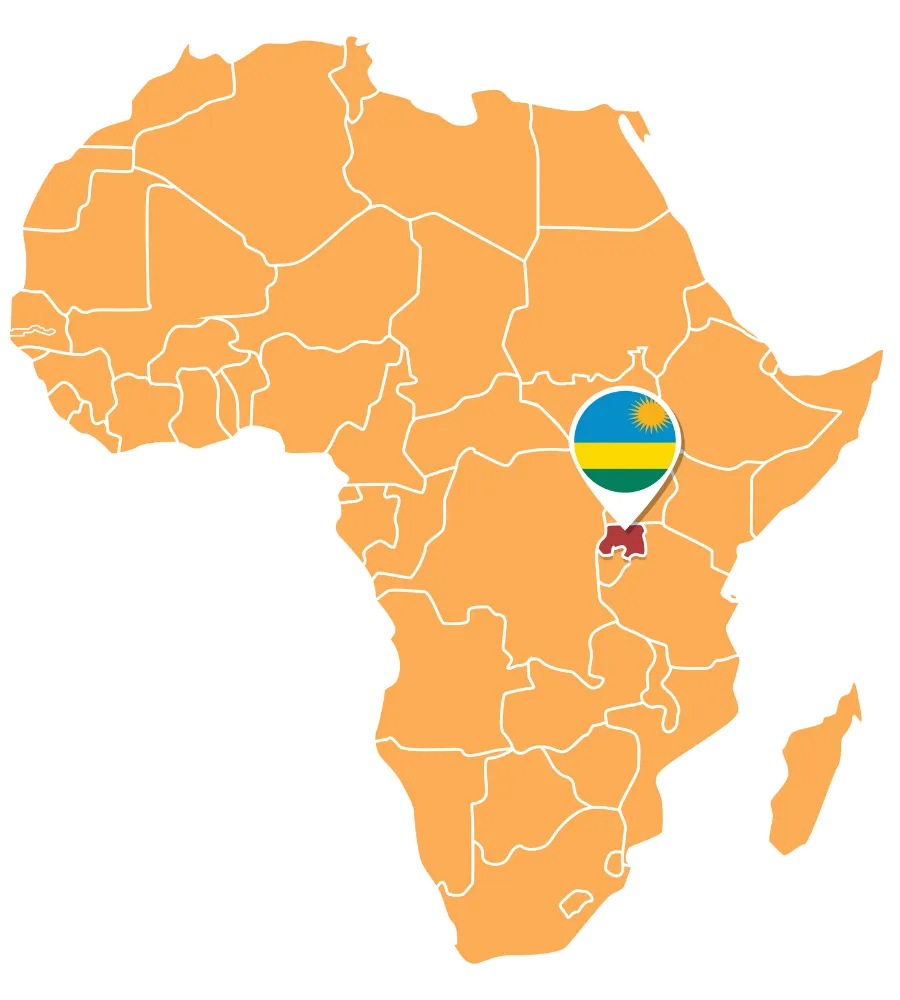
Why Travel to Rwanda with Iconic Travels?
Gorilla Trekking in Volcanoes National Park: We craft private gorilla trekking adventures with expert rangers, luxury lodges, and seamless logistics.
A Story of Transformation: Explore Kigali, one of Africa’s cleanest and most vibrant cities, and visit the moving Genocide Memorial to understand Rwanda’s inspiring progress.
High-End Eco-Luxury: Stay at award-winning lodges that blend sustainability with supreme comfort.
Easy Connections: Rwanda is ideal for twin-country itineraries with Uganda, Kenya, or Tanzania.
Top Experiences in Rwanda
Home to the majestic mountain gorillas, Rwanda offers a wealth of extraordinary safari and authentic nature experiences. We'll craft a once-in-a-lifetime Rwandan journey that perfectly matches your interests, passions, and dreams.
Rwanda Safari Packages
Whether you're celebrating a milestone or seeking a much-needed escape, let this inspiring selection of favorites guide your journey.
Iconic Travels Reviews
Discover how our services have created memories that go beyond the ordinary.
African Safaris FAQs
You’ve got questions—we’ve got answers. Here are some things most travelers want to know before they book.
1. What's included in an Iconic safari?
Everything you need—custom itinerary, luxury stays, private guide, park permits, and transfers. More details can be found on specific itinerary pages.
2. When is the best time to visit?
It depends! We’ll guide you based on what you want to see—wildlife migrations, gorilla trekking, or dry season game drives.
3. Do you offer custom tours?
Yes. Every safari we create is custom-built around your timeline, style, and interests.
4. How physically demanding is gorilla trekking?
It’s a moderate hike. We tailor the experience to your fitness level and work with guides to ensure you're comfortable.
5. Can I combine countries in one trip?
Absolutely. We often create multi-country itineraries—Uganda, Rwanda, Kenya, and Tanzania—seamlessly blended.
Ready to Explore More?
Our travel experts are ready to start creating your customized trip.
Rwanda Gallery
Rwanda's breathtaking scenery, diverse wildlife, rich cultural heritage, and distinctive landmarks create the perfect backdrop for your journey.
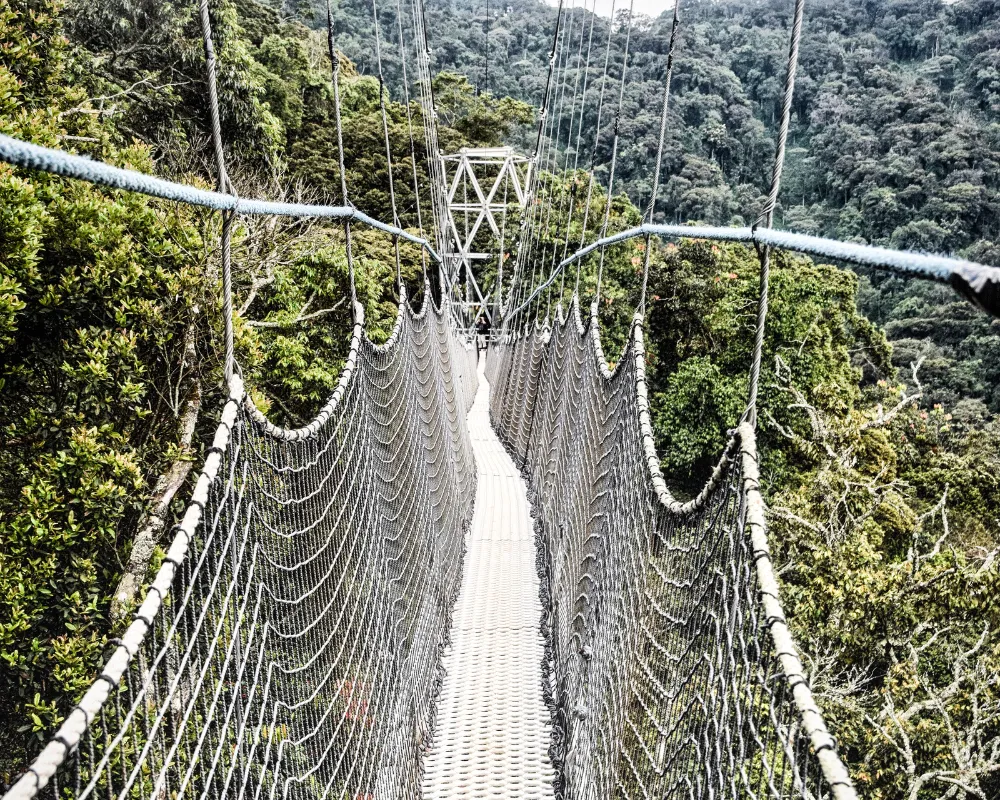
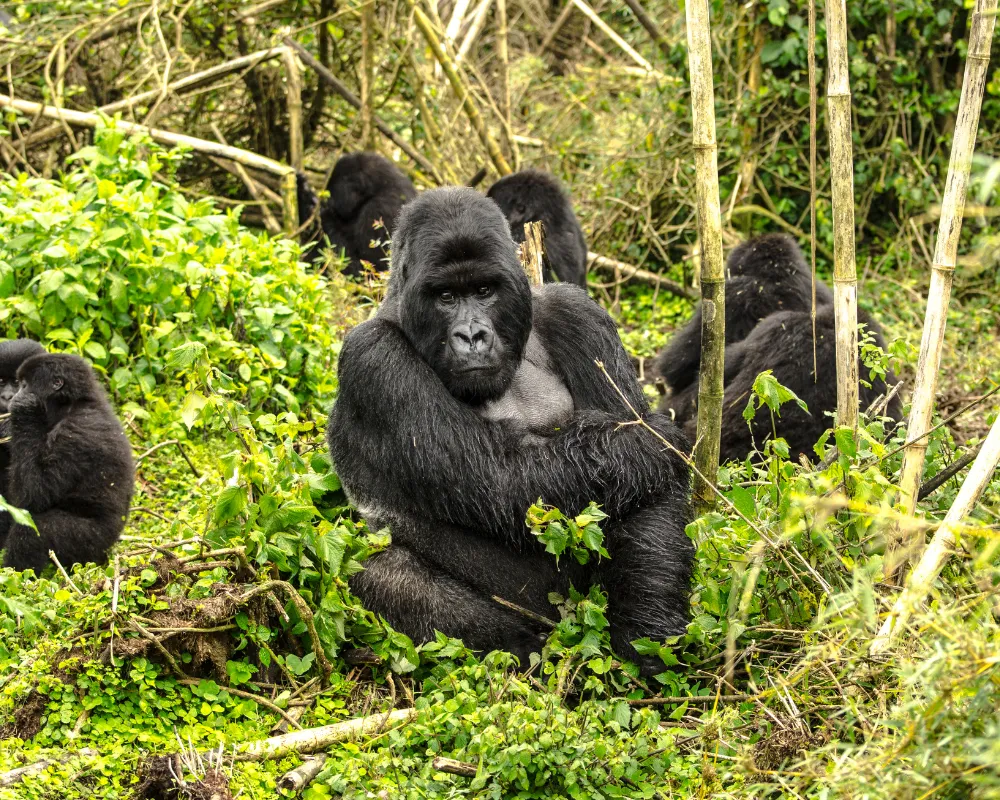
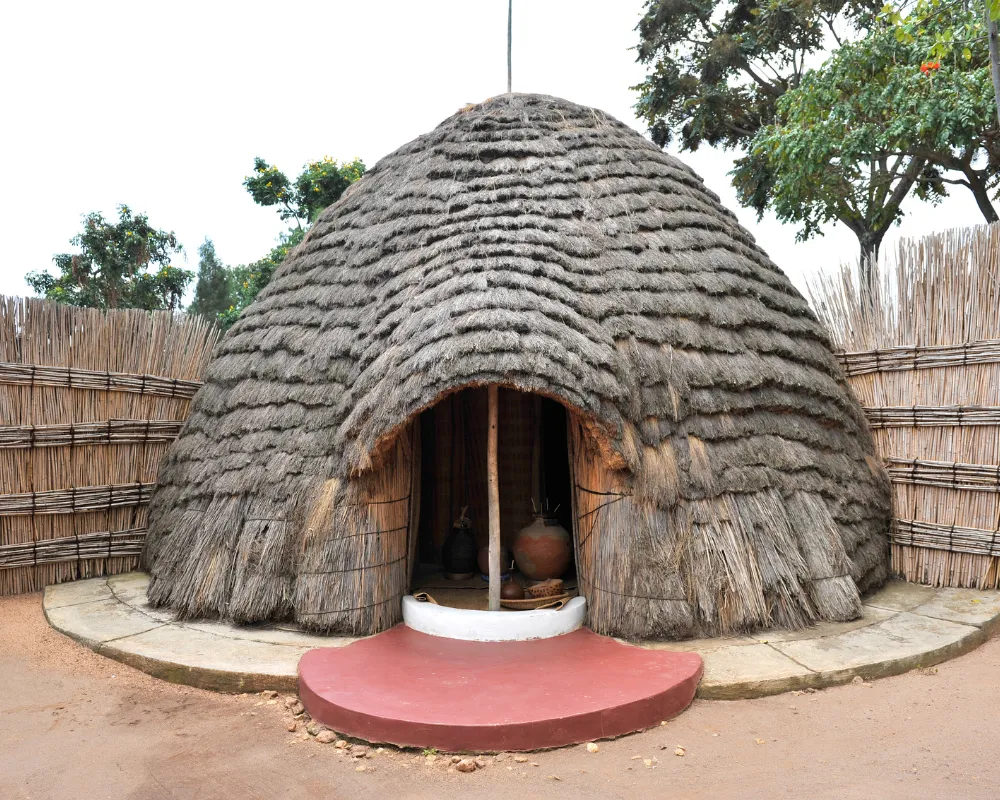
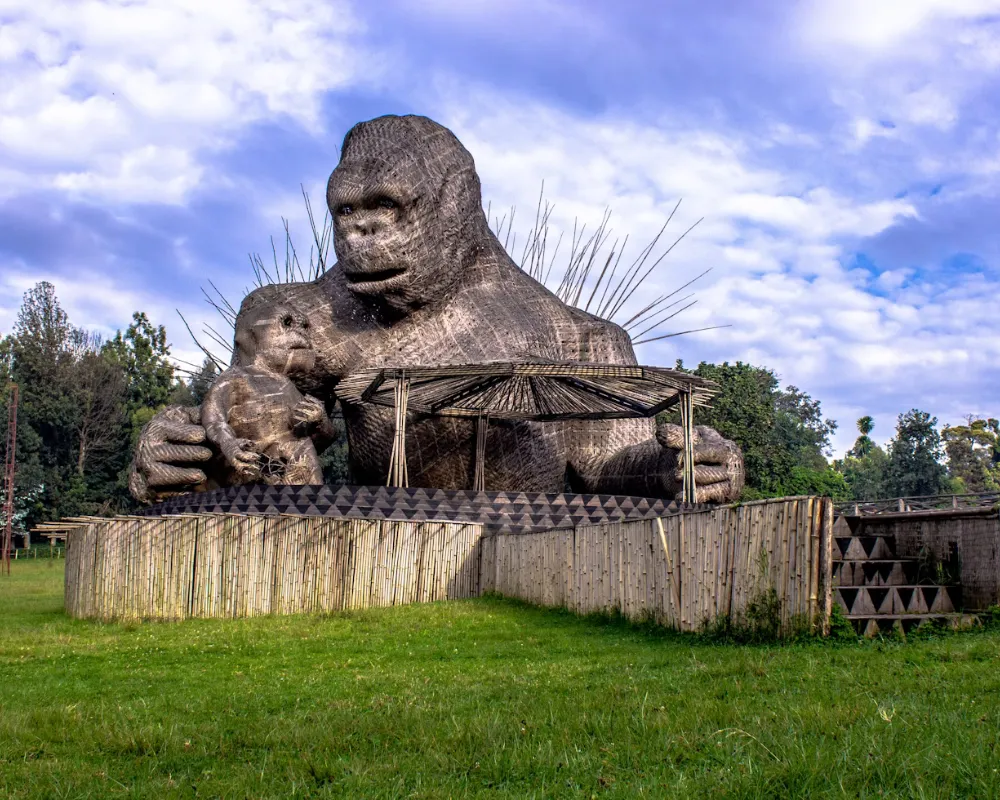


The Iconic Blog

Your Ultimate Guide to Experiencing East Africa's Great Migration!
The Call of the Wild
Imagine a world where millions of hooves thunder across vast plains, a spectacle so grand it's visible from space. A realm where the air vibrates with the energy of life, death, and rebirth. Welcome to the Great Migration!
This isn't merely a safari; it's nature's most compelling drama, a relentless pursuit of survival etched onto the very landscape. A visceral ballet of predator and prey, a living, breathing ecosystem laid bare. It’s a true bucket-list adventure that will recalibrate your understanding of the natural world.
In this guide, we'll delve into the intricacies of this epic journey, exploring the when, where, and how to witness its majesty. We'll also examine how your visit can be a force for good, helping protect this extraordinary phenomenon for generations to come.
What is this Epic Journey, Anyway? (The Basics Unpacked)
Forget quaint herds grazing placidly. We're talking about a moving kingdom of over 1.5 million wildebeest, accompanied by a supporting cast of 200,000 zebras, and a kaleidoscope of antelope, all orchestrated into a continuous, clockwise march.
But what fuels this nomadic existence? It's the age-old quest for fresh grazing and life-giving water, a primal imperative dictated by the ever-shifting East African rains. The herds follow the green shoots, a testament to the interconnectedness of life and landscape.
The scale defies easy comprehension. This grand circuit stretches over 1,800 miles across Tanzania's Serengeti and Kenya's Maasai Mara. It is truly monumental, a testament to the raw power of natural processes playing out on an immense stage.
And, of course, where the herbivores go, the predators follow. Lions, leopards, cheetahs, hyenas, and crocodiles are all integral players in this thrilling drama, each carving out their existence within this dynamic ecosystem.

An Ancient Rhythm: The Great Migration's Year-Round Dance
Unlike human migrations, which are often rooted in specific historical events, this is an ancient, enduring cycle, a natural rhythm that has played out for millennia. It doesn't have a "start date" in history; it simply is. A deep, almost geological pulse resonating through the land.
January - March: The Great Calving & Baby Boom! The Southern Serengeti, Ndutu Plains, and Ngorongoro Conservation Area become a birthing ground, a vibrant nursery teeming with new life. Witness thousands of wobbly newborns taking their first tentative steps, and the inevitable feeding frenzy for predators. It's pure, unadulterated drama, a stark reminder of nature's delicate balance.
April - June: The Great Trek & The Rut Begins. The herds begin their northwestward journey through the Central Serengeti, toward the Grumeti Reserve. Observe columns stretching for miles, a seemingly endless procession across the plains. This is also the start of the wildebeest mating season, the rut, a time of intense competition and ritualized displays of dominance. And, of course, the first river crossings at the Grumeti, a prelude to the main event.
July - October: The Iconic River Crossings – Brace Yourself! The Northern Serengeti (Kogatende, Lamai) and Kenya's Maasai Mara become the stage for the most iconic scenes of the migration. The nail-biting Mara River crossings, where wildebeest must brave the treacherous waters, teeming with crocodiles and the sheer force of the current. August and September are typically the peak months for these thrilling (and often heartbreaking) displays of survival.
November - December: The Return South & Green Grass Awaits. The herds begin their return journey, dispersing from the Maasai Mara back into the Southern/Eastern Serengeti (Loliondo, Lobo Valley), following the short rains. This is a slightly less crowded viewing experience, but still incredibly rewarding, as the herds prepare for the next calving season, completing the annual cycle.
It's crucial to remember that we're dealing with nature, and nature rarely adheres to strict schedules. Exact timings will vary with rainfall patterns and other environmental factors, so flexibility (and expert guidance!) is essential for a successful viewing experience.
Your Ultimate Safari: Getting Up Close and Personal
Whether you're drawn to the tender moments of baby wildebeest taking their first steps, the raw energy of the mating rituals, or the heart-stopping drama of the river crossings, there's a "best time" for you to witness the migration. The key is to align your travel dates with your specific interests.
And where will you lay your head amidst this wilderness?
Mobile Tented Camps: For the ultimate in migration immersion, these camps move strategically to follow the herds, ensuring you're always in the heart of the action. Picture yourself sipping your morning coffee from the comfort of your tent, the sounds of the migration your constant companion.
Permanent Tented Camps & Lodges: These fixed luxury bases offer a more stable and predictable experience, often with amenities like pools, spas, and gourmet food. While you might need to drive further to find the migration at certain times of the year, they provide a comfortable and reliable base for exploring the wider region.
Options exist for every budget, from adventurous basic camps to ultra-luxury lodges. Prices vary based on season, comfort level, and location (Kenya vs. Tanzania also a factor).
And perhaps the most crucial element of a successful migration safari? An expert guide. These professionals possess an intimate knowledge of the movements, the animals, and the secret spots that will elevate your experience from simply observing to truly understanding.
Beyond the wildebeest, most tours include searches for the "Big Five," opportunities for cultural visits to Maasai villages, and optional hot air balloon rides for a breathtaking bird's-eye view of the unfolding drama below.
Ready to witness this incredible journey? Our Serengeti & Maasai Mara tour packages are designed to put you in the heart of the action, no matter what time of year you visit!
The Unseen Struggles: Protecting Nature's Greatest Show
Beneath the surface of this awe-inspiring spectacle lie a series of challenges that threaten the very existence of the Great Migration.
Shrinking Wild Space: Expanding farmlands, fences, roads, and even new safari lodges are encroaching on migration routes, creating dangerous bottlenecks and fragmenting vital habitats.
Climate Change's Shadow: Unpredictable rains, devastating droughts, and increasingly frequent floods disorient the herds and jeopardize crucial water sources, like the Mara River.
Human vs. Wild: As human populations grow, conflicts inevitably rise. Crops are destroyed, livestock are hunted, leading to tragic retaliatory killings of wildlife, further exacerbating the tension.
The Silent Killer: Poaching: A persistent and insidious threat. Tens of thousands of wildebeest (and other animals) are lost to bushmeat poaching each year, a stark reminder of the economic pressures facing local communities.
Loving It to Death? Overtourism: The sheer popularity of the migration brings its own set of problems. Too many safari vehicles at river crossings can disrupt animal behavior, stress the fragile ecosystem, and encourage unethical practices.
Divided Lands: Managing this vast and interconnected ecosystem across two countries (Tanzania and Kenya), each with its own set of regulations and priorities, presents a complex challenge for seamless conservation efforts.

Guardians of Tomorrow: Securing the Migration's Future
Despite these daunting challenges, there is hope on the horizon. Dedicated individuals and organizations are working tirelessly to protect this natural wonder for future generations.
Corridors of Life: Efforts are focused on safeguarding and restoring vital migration corridors, working closely with local communities to ensure coexistence between humans and wildlife.
Community Power: Engaging local people and ensuring they directly benefit from tourism is crucial for long-term sustainability. By empowering communities to become custodians of the land, we create a win-win scenario for both wildlife and livelihoods.
Your Ethical Footprint: You can make a difference! Choose eco-certified operators, adhere to park rules, support local businesses, and practice responsible wildlife viewing (no off-roading, no disturbing animals).
Science & Tech to the Rescue: Researchers are employing cutting-edge technologies, such as satellite collaring and drones, to track herd movements, monitor threats, and inform conservation strategies.
The migration is more than just a visual spectacle. It's vital for the health of the entire ecosystem, playing a crucial role in regulating Africa's climate and even contributing to carbon sequestration. Its preservation is not merely an aesthetic concern; it's an ecological imperative.
Conclusion: Answer the Call!
The Great Migration is raw, powerful, and deeply moving – a true testament to the resilience and beauty of nature. It's an experience that will stay with you long after you've left the African plains.
By choosing responsible tourism, you become part of the solution, contributing directly to the preservation of this extraordinary phenomenon.
Don't just dream about it – experience it!
Ready to embark on this incredible journey?
Explore Iconic Travel Services’ Serengeti & Maasai Mara tour packages today and book your front-row seat to nature's greatest show!
Need More Information?
Get our detailed brochures and destination guides.
Travel Planner or Agency?
Let’s work together to deliver extraordinary East African journeys.
Destinations
Company
Follow Us
© 2025 Iconic Travels. All Rights Reserved.

